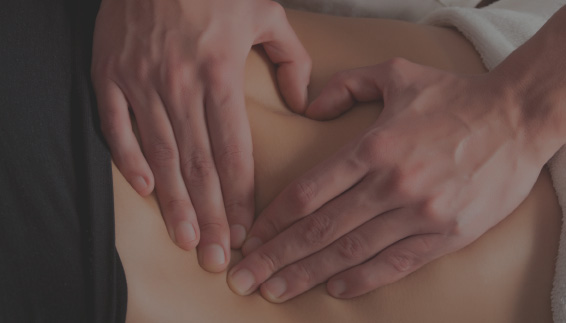
By Bryden McGregor, Osteopath
Back pain has to be the most common type of complaint I see in the clinic. At any one time, 26 per cent of Australians have lower back pain and 79 per cent of the population will experience it at some time in their lives. The direct costs are minor at about $1 billion annually, compared with the indirect costs of $8 billion that arise as a consequence of lost productivity and disability. However, I think the real cost comes at the expense of the people and families that are affected directly and indirectly by what can be a debilitating condition.
Staying active is an important part of managing back pain. Yet often, we don’t challenge our bodies anymore, we sit ‘comfortably’ in chairs and cars and couches and now 1 in 20 people can no longer touch their toes. Babies can eat their toes (or at least try) but it seems we have lost much of the drive to keep exploring our physical bodies or simply staying in touch with them. Preferring to get our dopamine (pleasure) hits from the control centre upstairs through such things as Facebook likes and cafe delights, which is all well and good but it’s the balance of the two that allows us to live long, healthy and contented lives.
The sad reality is that back pain is dramatically increasing and I don’t see myself running out of work any time soon. High stress levels and the sedentary nature of modern day lives can extract a heavy burden. Looking at just one consequence of a sedentary lifestyle prevalent in both young and old, is forward head posture. For every inch your head posture sits forward, the head gains 4.5kgs in weight! On top of this mechanical burden an increased forward head posture has been strongly associated with decreased respiratory muscle strength in patients [1], which can affect the ability to breathe and reduce lung capacity by as much as 30% [2]. Oxygen is obviously pretty important but diaphragmatic action also helps to pump fluids around the body and assists in digestion and visceral (organ) function. Forward head posture has also been linked to tension-type headaches [3], as well as increased blood pressure [4]. Long term forward head posture leads to muscle strain, disc herniations, arthritis, pinched nerves and instability [5].
But my real concern lies in the future. More and more studies show the importance of exercise and relaxation for maintaining a healthy existence and yet how many times have you seen an entire group of students after school looking directly down at their devices? How many kids stay at home on the X-box or watching TV versus riding to a friends’ place or playing in the park?
Last year I attended a paediatric conference in London where a paediatrician mentioned a few interesting studies. One study compared the time it took for 10 year olds today to run a mile, to how long it took for their parents to run a mile when they were 10 years old. Todays 10 year olds ran 90 sec slower (approximately 1 whole lap slower) than their parents. Another trial in Scotland tested grip strength in children now and 20 years ago indicating that today’s children are 33% weaker.
Do yourself a favour and teach your children to exercise, go to that yoga class, that stretch class, take a break every 30 minutes, every time you go to the toilet take 2 minutes to do some pec stretches. Consciously think about tucking in your chin and bringing your throat towards your spine and pinching your shoulder blades together. Breathe deeply.
Prevention is the best cure, but even if you are experiencing pain it’s never too late to implement a regular routine of exercise, good postural awareness and to seek treatment for back problems before things get complicated. Finding an Osteopath that you trust can help you to improve joint mobility, relieve muscular tension, inflammation and nerve irritation. They can also offer advice on posture, exercises and stretching, provide guidance on diet, hydration and exercise. The important message is that you don’t need to suffer through back pain and you are never too young or old to adopt life changing habits. I’ll leave you with a quote from an 8 year old patient of mine “H.O.P.E. Hold On Pain Ends”.
Reference for cost of low back pain: http://www.ncbi.nlm.nih.gov/pubmed/15038680.
 Bryden graduated from RMIT University in Melbourne after completing a Bachelor of Applied Science in Complementary Medicine, Osteopathy and a Master of Osteopathy. He is also a member of Osteopathy Australia. In addition to Osteopathy, Bryden is an experienced sports trainer and massage therapist. He is passionate about restoring movement and function to help people achieve their optimal health. Through effective assessment, diagnosis and treatment, Bryden is able to guide an individual to a better understanding of their body and provide symptomatic relief. He uses a range of techniques including manipulation, massage, dry needling and stretching, as well as patient education and exercise prescription. He has a keen interest in treating a wide variety of musculoskeletal conditions affecting people of all ages, including pregnant women and babies.
Bryden graduated from RMIT University in Melbourne after completing a Bachelor of Applied Science in Complementary Medicine, Osteopathy and a Master of Osteopathy. He is also a member of Osteopathy Australia. In addition to Osteopathy, Bryden is an experienced sports trainer and massage therapist. He is passionate about restoring movement and function to help people achieve their optimal health. Through effective assessment, diagnosis and treatment, Bryden is able to guide an individual to a better understanding of their body and provide symptomatic relief. He uses a range of techniques including manipulation, massage, dry needling and stretching, as well as patient education and exercise prescription. He has a keen interest in treating a wide variety of musculoskeletal conditions affecting people of all ages, including pregnant women and babies.